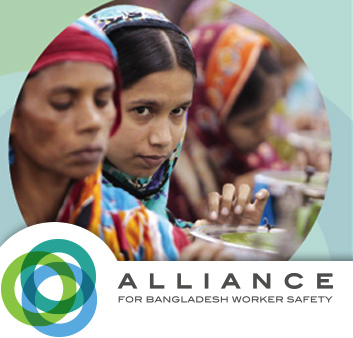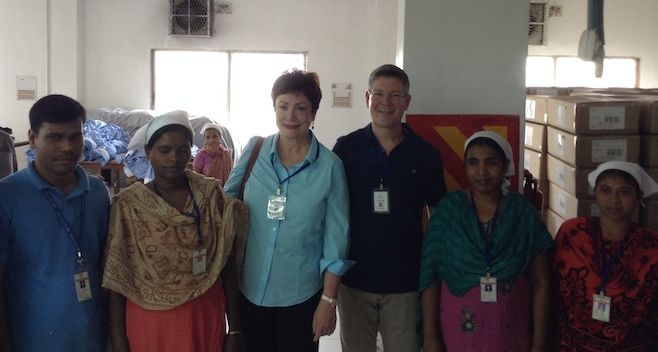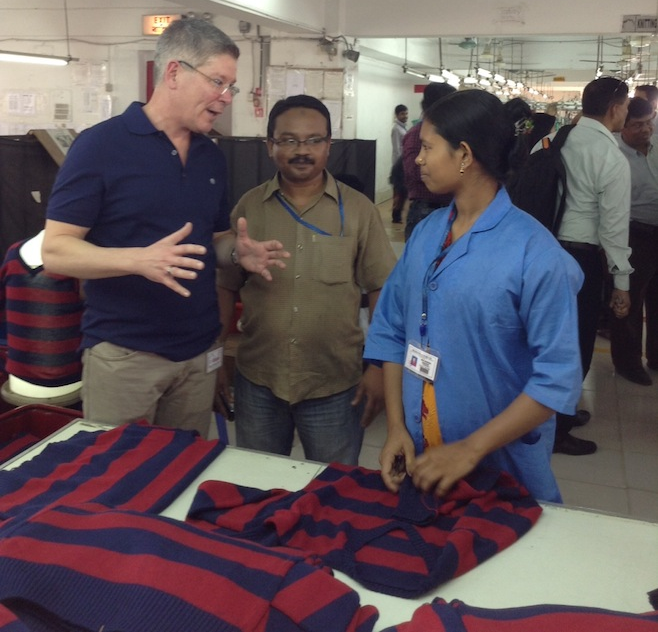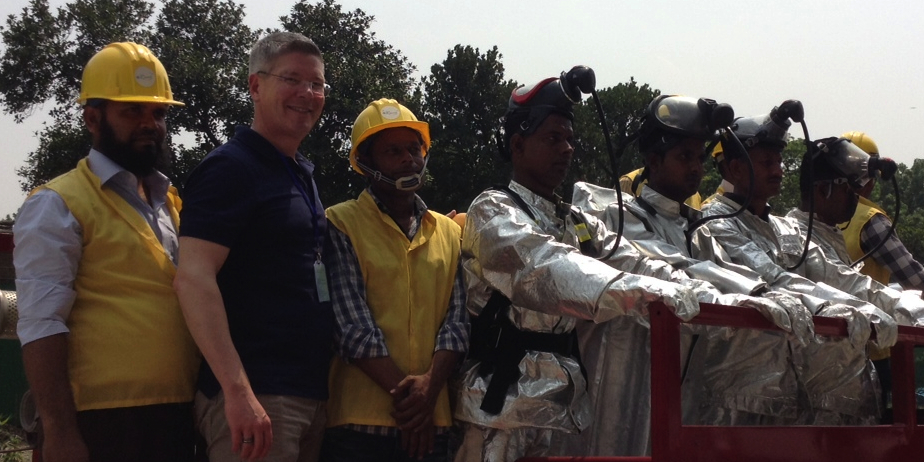Daniel Duty, Target VP of Global Affairs, on a trip to Bangladesh for factory visits in April.
Target has a history of focusing on the health and well-being of the communities where the Bullseye does business — from the headquarters home of Minneapolis to Bangladesh.
In July 2013, Target, along with other leading North American brands and retailers, saw an opportunity to join forces and elevate safety conditions for garment factory workers across Bangladesh. The Alliance for Bangladesh Worker Safety — formed to drive industry-wide change through measurable actions — brought fresh focus to the country’s poor working conditions and buildings, as illustrated by the Rana Plaza factory collapse. While not directly involved with the tragedy, Target is committed to being part of the bigger solution.

Nearly a year after the tragedy, progress has been made — Bangladesh has raised the minimum wage for garment workers and retailers have launched factory inspections and safety education programs. Of course, there’s still more to be done.
Below, Daniel Duty, Target’s Vice President of Global Affairs, answers our questions on the state of worker safety in Bangladesh.
Can you tell us about Target’s work in Bangladesh?
We entered Bangladesh in the 1990s because we saw an opportunity to manufacture garments in an up-and-coming country that was truly a great place to make quality clothing. Over time, we took a closer look at the factories we were manufacturing in and realized that some couldn’t keep up with our high standards for safety. We consolidated down to factories that met our standards, and yet where we know we could help drive positive change. This decision was about creating safer environments for Bangladeshi factory workers, our team and our partners.
Why did Target take a leadership role in improving Bangladesh worker safety?
We have learned a lot about factory safety over the years in Bangladesh, and felt an obligation to share our knowledge with others. We consider our garment vendors and factory workers to be an extended part of our family, so it was important for us to take action and show our legacy of building healthy and sustainable communities. Creating a long-lasting solution in the garment industry in Bangladesh can’t be done by any one company or organization. It has to be done in partnership, and that’s ultimately what drew us to The Alliance for Bangladesh Worker Safety.

How has progress been made since the Alliance’s formation?
In the last eight months, the Alliance has made amazing progress in improving safety conditions for workers. The primary achievement is the development of a common set of safety standards that all Alliance members must adopt and factories must abide by. Previously, every retailer or vendor had their own set of standards to follow, making it confusing and costly for factories, particularly those working with multiple brands. These standards have also been adopted by other non-Alliance brands and organizations, removing even more complexity for factory workers.
We’ve recently shared progress towards two other big goals for the Alliance – inspections and worker training. The Alliance has committed to inspect every factory where members do business by July 2014. We’re more than half way to our goal and confident that all 700+ factories will be inspected on time. Training programs are also underway, with more than 400,000 factory workers and managers trained today. We expect one million to be trained by July.
So while there is still a lot of work to do, in reflecting back on the one year anniversary of the Rana Plaza tragedy, I can honestly say that the situation is getting better and will continue to get better for the factory workers in Bangladesh.

What are you most proud of?
I’m most proud of the progress that the country of Bangladesh is making and will continue to make — to become a better, safer country. I’m also proud that companies like Target and other major retailers could form this coalition and work together in a positive way even though we compete. I see this as a model for the future, where companies team up to help solve some of the world’s most pressing social issues.
How will the Alliance foster a new, empowered work force in Bangladesh?
Many people don’t know that more than 80 percent of the workers in Bangladeshi factories are women. For many of them, these factories offer the first opportunity to have a job, start building skill sets outside the home and care for their families. As you think about Bangladesh growing into the future and moving up the economic ladder, it will be these women who lead the economic prosperity. We’re very excited to help equip them with the knowledge they need to be both safe and successful.
So what’s next for the Alliance?
We’re continuing to inspect and audit factories, and help train factory workers so they understand what safety looks like. We’re also beginning to lay the foundation for the remediation process so that factories can be updated and improved. And we’ll keep working with different organizations, including the Bangladeshi government, to build a sustainable program that is self-sufficient across the country and, in the end, results in a safer Bangladesh.

